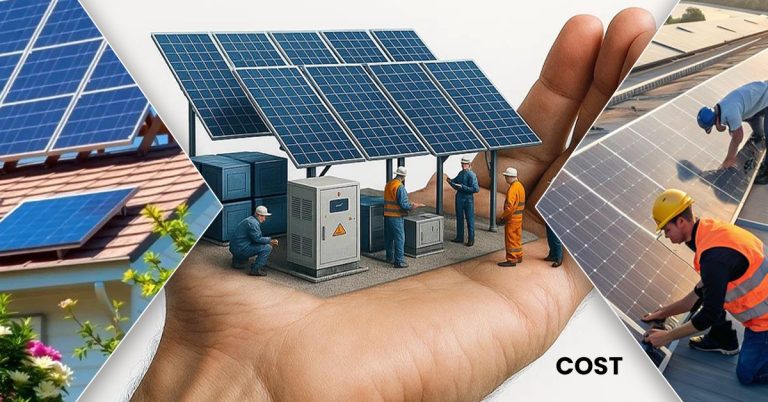Going solar can be one of the most important improvements you can make for the environment and your wallet. It allows you to take control of your electricity bills and reduce your carbon footprint, resulting in substantial savings and increased sustainability.
One question many people ask is, “What is the solar panel installation cost?” This comprehensive blog is your answer. We will discuss the price of installing a solar panel, how to compare quotes, and how to get the most value from incentives and net metering.
30-Second Summary
In this detailed blog, learn about the complete solar panel installation cost breakdown. Discover the cost in different states, incentive programs, and how commercial and residential systems differ.
Additionally, explore the methods you can use to pay for solar, what kind of ROI to expect from it, and helpful tips to cut down the overall cost without compromising on the performance.
Average Solar Panel Cost (2025 Snapshot)
Local installation cost, system size, regional costs, local incentives, and home battery backup are the factors that affect this cost.
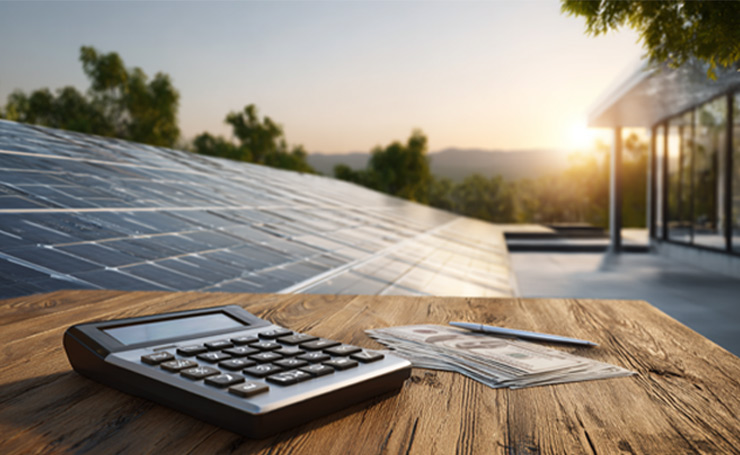
The residential solar installation cost is around $14,210 for a small panel before any financial incentives. However, after the full solar tax credit, the price drops to $9,937. The size of the system depends on your house.
If you need a few panels for a small DIY project, each panel will cost you around $200 to $350 (between $0.80 and $1.40 per watt).
Commercial installs generally have lower per-watt costs due to scale, such as larger systems and streamlined permitting, but the absolute costs are higher, and financing and tax rules are different.
Solar Installation Cost by State
The region you live in matters a lot. In places with lower living costs, the wages can be lower, which brings down the total installation cost.
The estimates in the table are the average cost installed per watt before incentives.
| State | Avg. Installed Cost per Watt (approx.) | Example: 6 kW system cost (pre-incentives) |
| Arizona | $3.61 / W to $3.39/W | $20,340 |
| California | $4.31 / W to $3.76 / W | $22,560 |
| Connecticut | $3.65 / W to $3.68 / W | $22,080 |
| Florida | $3.45 / W to $2.82 / W | $16,920 |
| Massachusetts | $4.18 / W to $3.92 / W | $23,520 |
| Maryland | $3.93 / W to $3.64 / W | $21,840 |
| Minnesota | $4.61 / W to $3.66 / W | $21,960 |
| New Hampshire | $3.72 / W to $3.37 / W | $20,220 |
| New Mexico | $4.82 / W to $3.56 / W | $21,360 |
| Oregon | $3.79 / W to $3.68 / W | $22,080 |
| Texas | $3.83 / W to $3.17 / W | $19,020 |
| Wisconsin | $3.29 / W to $3.83 / W | $22,980 |
How System Size (kW) Affects Cost
Solar installers calculate the cost of the system based on its size in kilowatts (kW). One kilowatt is equal to 1000 watts. The size of your system gets bigger as you add more panels.
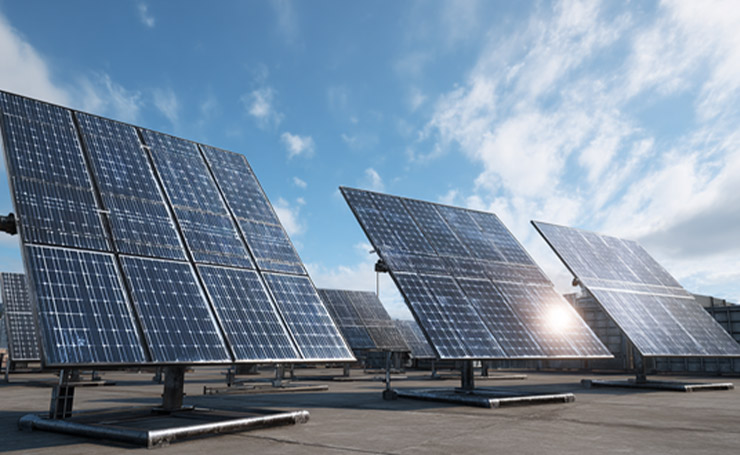
Look at it from the perspective of economies of scale.
Smaller Residential Systems (3–6 kW)
These are expensive as the installer’s fixed costs (setup, wiring, labor, and permits) are spread over a few panels. For instance, a small 3kW system might be around $3.20 to $3.50 per watt, so it ends up getting more expensive on a per-watt basis.
Medium Residential Systems (6–10 kW)
These systems are more common for households. There are more panels included, and the fixed prices are spread out better. This is why the per-watt cost can drop to $2.80 to $3.10 per watt.
Large Residential and Commercial Systems (20–50+ kW)
Bigger solar systems have low costs due to bulk pricing, faster labor, and smart use of installation equipment. This makes the price drop lower, sometimes below $2.50/ W.
Solar Installation Cost Breakdown
The average cost per watt is between $2 and $3. Let’s see the factors that make up the final price.
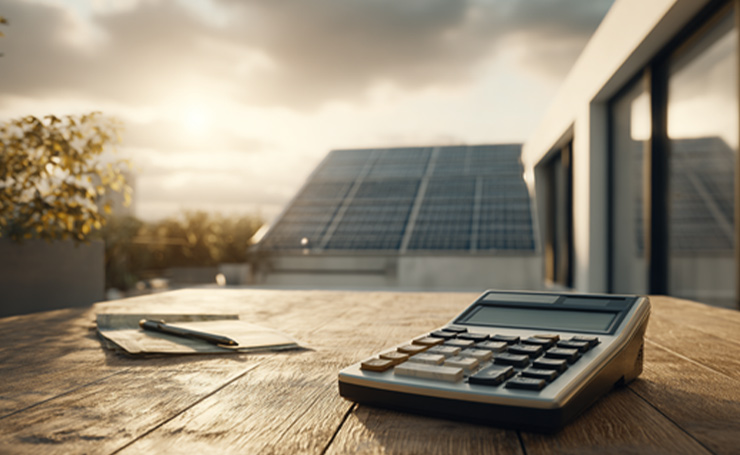
Solar Panels
The type and quality of the solar panels you use affect the pricing. Monocrystalline or polycrystalline panels are most commonly used for both residential and commercial systems.
The difference between these two is material and efficiency. Monocrystalline panels are made from single, pure silicon crystals. Polycrystalline panels are made by melting various silicon fragments.
- Monocrystalline panels provide upto 24% efficiency, work perfectly for less roof space, and handle severe temperatures easily.
- Polycrystalline panels are cheaper and provide 15 to 20% efficiency. They are ideal for large spaces. However, they lose their efficiency in extreme temperatures.
Equipment
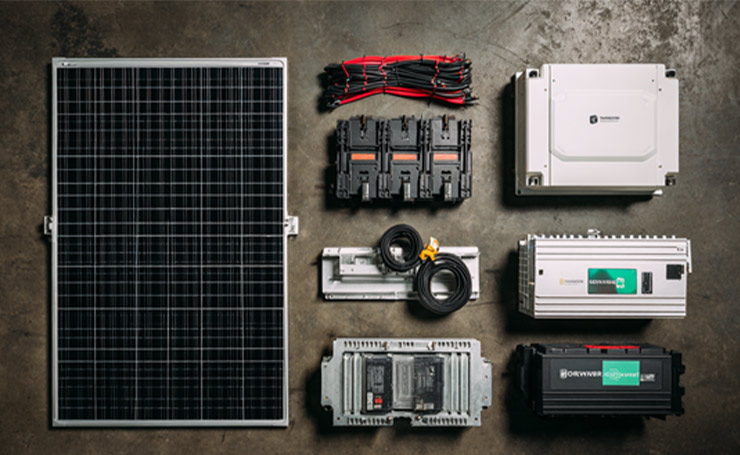
Batteries: Solar batteries allow you to keep your lights on even when your local power grid is down. However, the battery storage costs around $7000 to $18,000. It may be beneficial for people who live in areas with frequent power outages.
Inverter: A solar inverter changes DC electricity into AC electricity. The inverter cost depends on the size and efficiency, but expect to pay between $1000 and $3000.
Mounting system: This system holds the solar panels on your roof in place. The racking and mounting cost depends on the type of installation, but the general cost is 7 to 20 cents per watt.
Electrical wiring and hardware: It includes the wiring, circuit breakers, and switches needed to connect the solar to your residence’s electrical system. The typical cost range is 10 to 20 cents per watt.
Optional equipment: If you want an EV charger for your electric vehicle and critter guards to prevent birds and squirrels, add another $400 to the installation cost.
System Size
There is a formula to determine what system size you need for your residence. See how many kilowatt-hours you used last year on your electricity bill. Divide that figure by 1200. This is the rough estimation of the system size you need.
Your Roof’s Condition
Thoroughly examining your roof before installing solar panels is crucial. The solar panel system is designed to last you around 25 to 30 years. Make sure that your roof lasts as long, because removing the panels and reinstalling them will be extremely expensive.
Your Roof’s Angle
The installation cost also depends on the angle of the roof. For flat roofs, installations require specialized racking to tilt the panels toward the sun. It might add to the upfront cost, but it is better for flexibility in positioning.
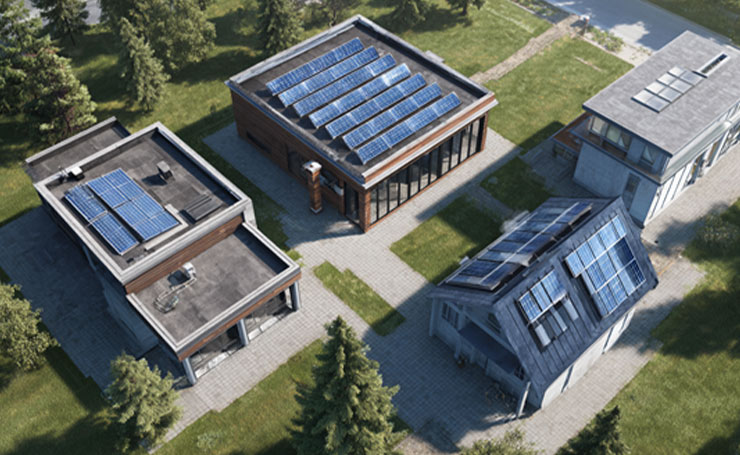
Pitched roof facing south and at an optimal tilt does not require any additional equipment, making it less expensive. North-facing roofs with a high pitch are not an ideal installation angle and can increase the cost of solar.
Labor and Permits
Labor: Solar installation labor includes hiring an electrician to handle the wiring, connect the system to your residence, and set up equipment to provide the same AC voltage you have in your house.
The usual labor cost is 50 cents to $1 per watt, but it can vary depending on your area and the complexity of installation.
Permits: Permits ensure that solar installation adheres to all local regulations. Permitting fees are different in every region, but for residential systems, they can cost a few hundred dollars. Some states limit the fees.
For instance, the maximum fee for residential and commercial projects in Colorado is $500 to $1000, respectively.
Annual Maintenance
Solar panels require minimal upkeep. To clean them, the only maintenance cost will be the water used. If you hire a professional person to clean them, it will be around $100 to $350, on average.
You will also need a person to check if the panels are working fine every few years. It will cost you the same as a professional cleaner.
Warranty and Repair
Depending on the warranty, occasional repairs also add up to the installation cost. For instance, the warranty of an inverter lasts up to 10 to 15 years. If it fails after this period, the replacement cost will be $1000 to $3000.
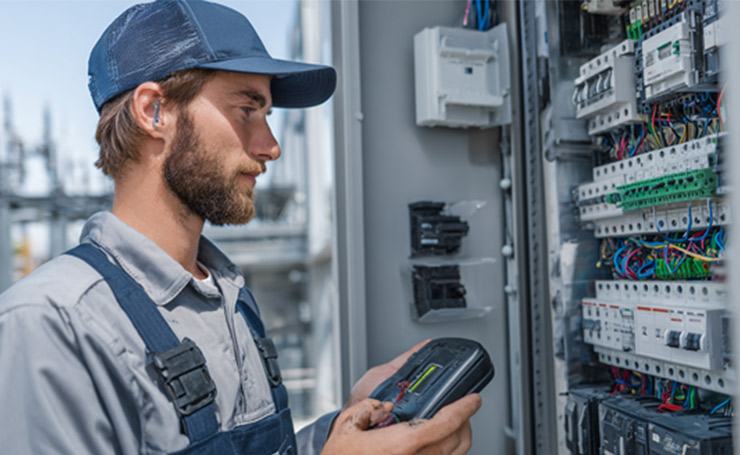
Other possible repairs may include wiring, damaged panels, and hardware upgrades. Many companies have solar monitoring apps through which you can track the performance of your system and take action on time if something fails.
Solar Incentives and Tax Credits
Installing a solar system can be extremely costly. However, the solar panel cost after incentives can help you save bucks and increase your net savings over time. People who have a complete solar system installed in their houses can save $41,000 to $62,000 over 25 years.
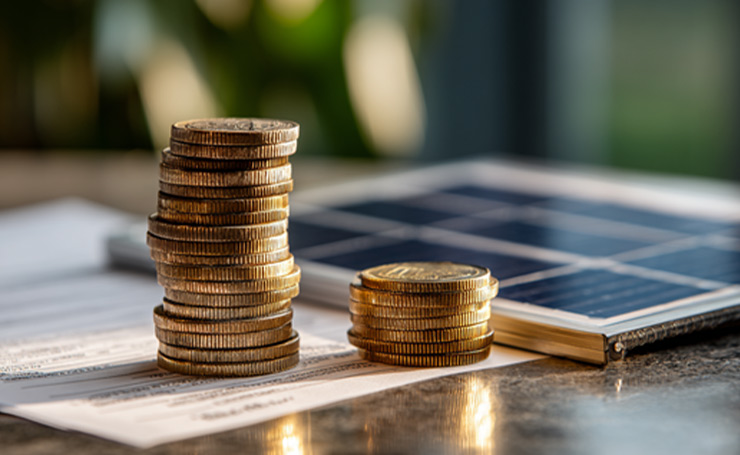
Solar incentives make installation affordable. Consult the information below to benefit from these incentives.
Federal Solar Investment Tax Credit (ITC)
ITC or Investment Tax Credit is a big money-saving benefit for people installing the panels. It lets you cut down the amount of taxes you have to pay, upto 30% of your solar cost.
For example, if your solar installation (including labor and add-ons) costs you $20,000, you can claim $6000 back.
If you do not want to take it all in one go, you can get it in tiny amounts over the next 5 years. However, this credit will no longer be available for solar installations after 31st December 2025 (unless the government extends it).
State and Local Incentives
States like Colorado, New York, and Massachusetts offer tax credits on solar installations, which you can take with the ITC.
Apart from states, individual municipalities and utility companies also offer solar rebates and incentives to decrease the financial burden of installing solar panels.
Net Energy Metering (NEM)
This policy credits you for the excess electricity that your panels generate, but you do not use it in real-time. The extra energy goes back to the power company, and they give you credits for it.

When your panels underproduce energy, like on cloudy days or at night, you can use these credits instead of paying for new electricity. One-to-one metering is ideal, but net billing can also save you money over time.
Property Tax Exemptions
According to the studies by SolarReview and Berkeley Lab, the resale value of a house increases after installing solar panels. Improvements that increase a residence’s value also increase property taxes.
However, many states and municipalities do not charge increased taxes to homeowners after they install solar.
Sales Tax Exemptions
In many states, you do not have to pay for sales tax when buying solar panels or equipment. In this way, you are paying for the actual equipment, not the extra tax.
For instance, if your state has 6% sales tax and your solar system is $15,000, you can save $900 right away.
Solar Renewable Energy Certificates (SERCs)
Some states require utility companies to get a specific percentage of their electricity from clean sources, like solar. Due to this rule, many utilities buy SERCs from people who own solar panel systems.

In states that have an active SERCs market, you can get compensation based on the energy generated by your panels.
Residential vs Commercial: Major Differences
The major solar installation cost factors that differentiate residential and commercial systems are scale, permits, incentives, and maintenance.

System Scale
Residential systems usually use 3 to 12kW, which is enough to power a typical house. On the other hand, commercial systems start at 50kW and can go up to several megawatts.
For larger systems, the cost per watt is lower due to bulk equipment and labor efficiency.
Permitting and Engineering
Permitting is a straightforward process for homes that includes regular safety checks and municipal approval.
Commercial systems require an in-depth structural analysis, complex electrical interconnection agreements, and even environmental reviews. This makes the entire process longer and more expensive.
Incentives and Tax Treatment
Homeowners can get the advantage of the Federal Solar Tax Credit (ITC) and other state rebates or net metering programs.
On the contrary, businesses can benefit from the ITC commercial rules, MACRS (Modified Accelerated Cost Recovery System) depreciation, and bonus depreciation. These systems can significantly reduce the cost in ways that are not available to homeowners.
Operations and Maintenance (O&M)
The maintenance of residential solar systems is minimal and can be handled by homeowners or installers.
The maintenance of commercial systems includes O&M contracts, which cover cleaning, routine inspections, and performance monitoring. Commercial O&M costs are lower per-kilowatt, even though the total contract value is higher.
Commercial Solar Installation Cost
| Average Electric Bill | Solar System Size | Cost Before Incentives | Federal Tax Credit (30%) | Depreciation (~22%) | Cost After Incentives |
| $650 | 55 kW | $145,000 | $43,500 | $31,900 | $69,600 |
| $1,300 | 110 kW | $250,000 | $75,000 | $55,000 | $120,000 |
| $2,600 | 220 kW | $460,000 | $138,000 | $101,200 | $220,800 |
Residential Solar Panel System Cost
| Average Electric Bill | Solar System Size | Cost Before Incentives | Federal Tax Credit (30%) | Cost After Incentives |
| $70 | 6 kW | $28,000 | $8,400 | $19,600 |
| $130 | 12 kW | $36,000 | $10,800 | $25,200 |
| $200 | 18 kW | $51,000 | $15,300 | $35,700 |
How to Pay for Solar Panels
There are a few ways to buy or lease solar panels with minimal or no upfront costs.
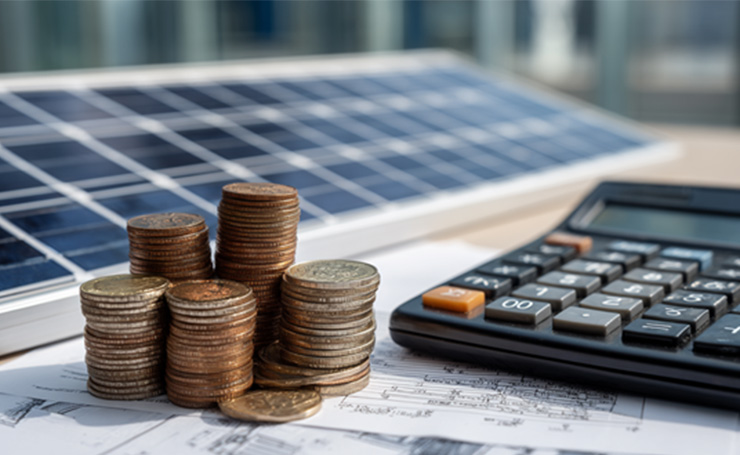
Pay Upfront
Paying in cash means that you need to save the entire cost of your solar system. Most installers need 50% payment in advance to start the design and planning phase, and the other half after they start your system.
It may be expensive to pay all at once, but it will be cheaper in the long run because of the lack of interest.
Get a Loan
A solar loan is a common financing option due to its accessibility. You either need a small down payment or no money down for installation.
You will then pay off the remaining cost as well as the interest on the loan, over the period of 2 to 20 years. This interest will add to your solar installation cost and reduce your net savings.
Buy on Lease
A solar lease is a rental agreement. You basically pay nothing up front, but rent the equipment on a monthly payment. You then get to use the power to reduce your electricity bills.
This financing option provides immediate savings, but long-term savings can be low. There is no payback period, and you will never own the panels.
Power Purchase Agreement
A Power Purchase Agreement (PPA) is similar to a solar lease. You pay nothing up front to have the system installed. Instead of paying a monthly fee, you pay for the electricity generated by the panels.
PPA also allows you to save immediately, but long-term savings are lower because you do not own the solar panel system.
What Kind of Return to Expect from Solar System
Installing solar at your place is an investment. Here is what ROI you should be expecting.

Average Payback Time: Most solar systems start paying for themselves in 6 to 10 years. Larger systems may take upto 12 years.
Faster ROI: You can get a faster ROI if you get federal and state tax credits, have high electricity usage, and have a house battery system that stores excess power.
Increased Home Value: A home with installed solar will sell for 3 to 5% higher.
Monthly Savings: You get to save $80 to $250, depending on the system size and power rates.
In the US, the average ROI of a residential solar system is 10% and the payback period is 10 years.
Why Solar Costs More in the US
Solar installation costs are higher in the US than in other countries due to several reasons.
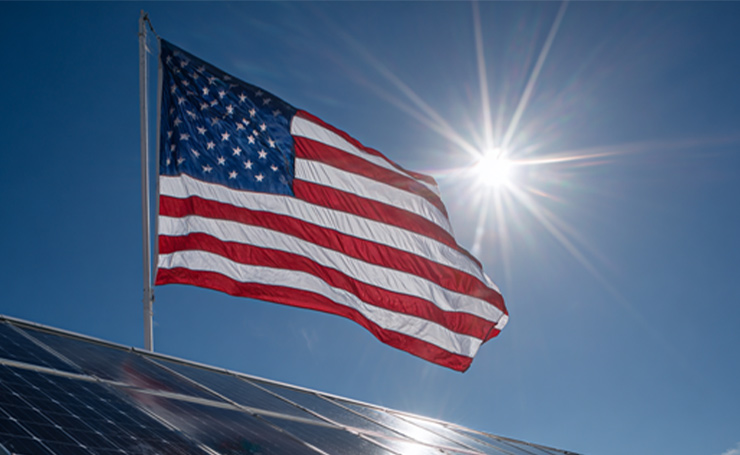
High Equipment Prices: The hardware prices are high compared to those in other countries due to tariffs on imported panels and the effort to promote US-made products.
Add-ons: System add-ons, such as high-quality equipment, extended warranties, and long cable runs, increase upfront cost but also ROI and tax credits.
Labor Requirements: Many states have a rule to hire only licensed electricians for installation. With a limited labor pool and increased wages, labor becomes significantly expensive.
Complicated Regulations: Permitting and inspection across states, jurisdictions, and utilities increase paperwork and make the process lengthy.
Financing Costs: While loans make solar installation accessible, they increase overall system cost by 20 to 30% due to the interest.
Tips to Lower Solar Installation Cost Without Cutting Quality
You can cut down the cost of solar panel installation without compromising on quality with a few easy steps.

Group Buying Programs: Many cities and non-profits allow people to buy solar panels in a group. In this way, many homeowners buy these panels together at a lower price.
Opt for Standard Mounts: Do not choose fancy raking systems or custom roof works, as they add to the cost. Choose standard mounts as they are cheaper and still secure.
Off-season Discounts: Many solar companies give discounts in the late fall or early winter when the demand is low.
Right Size of the System: Instead of going bigger (thinking it is better), choose a system that is ideal for the size of your house.
These tips will help you establish a reliable setup without overspending.
How to Get Accurate Solar Installation Quotes
You need to get at least 3 quotes before finalizing the installer you want to hire. You need to ask each of them the following.
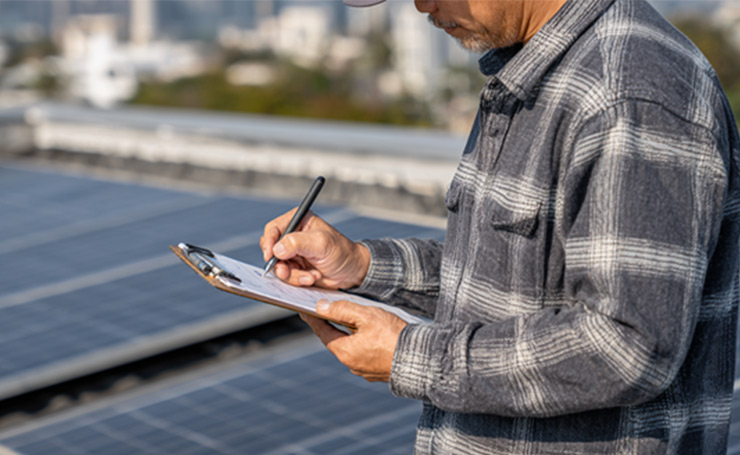
- A detailed line-item quote (inverters, racking, panels, wiring, taxes, permits, and incentive assumptions.
- System size (kW) and estimated annual production with shading analysis.
- Equipment specifications and details of warranty.
- Payment options they offer (lease, loan, cash, and PPA) and how incentives are applied to them.
- A copy of the permit application and contract.
In a Nutshell
Solar is a choice where you are contributing to a healthy environment and reducing your electricity bills. This guide was a complete breakdown of solar panel installation cost, whether you want it for your residence or business.
Use it to make a wise investment decision, as solar panel installation does pay you back.
If you are interested in more information about solar panels, feel free to explore Green Energy Insights.
FAQs
What is the Solar Installation Cost per Watt in 2025?
The cost is roughly $2.75 to $3.50/ W before incentives for residential systems and $1.46 per watt for commercial systems.
How much does a 5kW system cost?
At $3 per watt, the price is around $15,000 before incentives. After a 30% federal credit, the price becomes $10,500.
What are the General Labor Costs?
The cost of labor depends on the region, but commonly it is 15 to 20% of the total installed cost. A complex roof may increase labor.
Do Permits Affect the Solar Installation Price?
Yes, permits and inspection fees can add up to hundreds or even a few thousand dollars, depending on the municipality.

